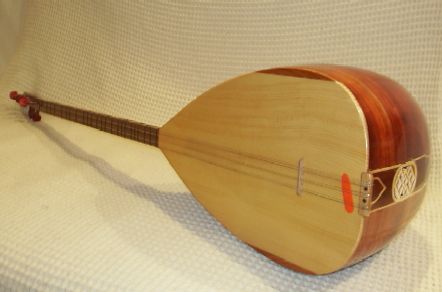The Baglama has been one of the popular stringed instruments in Turkey for about centuries. This instrument is also sometimes referred to as saz, which means ‘Instrument.’ In turkey, the term saz is relatively interchangeable with the saz, which refers to the plucked string, long-neck lute instruments that were used in the Ottoman music, Turkish folk music, Armenian music, Azerbaijani music, and in some parts of Syria and Iraq.
Moreover, the Baglama is somewhat similar to the western lute and the middle-eastern oud, which both have a round back but with a much longer neck. Nevertheless, these can be played with a plectrum or with a fingerstyle, also known as selpe. In Greece music, the name baglama is given to the bouzouki, an instrument that is related to the Turkish Baglama. A related instrument that was called the Turkmen dutar was later on introduced with the Turkish settlement of Anatolia in the late 11th century. This dutar is a traditional two-stringed lute that was initially found in Central Asia and Iran, then had been recently played in some areas of Turkey after it has been introduced.
In Turkey, the most commonly used string instrument is the Baglama, which has seven strings and is divided into two or three courses. Although it is called Baglama in Turkey, the instrument’s name varies depending on the region, country, and even in size. Some of its names were Divan Sazi, Bozuk, Cogur, Cura, Tambura, Kopuz, and of course, Baglama. The smallest member of the baglama family is the cura. Next to its size is the tambura, which is tuned an octave lower than the cura. The largest among the baglama family is the divan sazi. However, it is also tuned an octave lower.
The Baglama has three main parts, including the bowl or tekne, which is made out of mulberry, beech, juniper, walnut, or spruce wood. Second is its soundboard or gogus. The soundboard of the Baglama is usually made out of juniper or beech wood. The third is its tuning peg, also known as burgu. In its tuning peg, the frets are tied using a fishing line, which allows the frets to be adjusted. Like the guitar, the Baglama can also be played using a pick, called the mizrap or tezene. Meanwhile, in some regions, it is preferred to be played using fingers in a style called selpe. Interestingly, there were also electronic baglamas which can be connected to an amplifier.
A photo of the cura and Baglama
In playing the Baglama, the first thing a player needs to do is to tune their instrument. If the instrument has three courses, it probably has about seven or six strings. These strings should be played at the same time, but they could be tuned about an octave apart. As well as that, tuning a saz is somewhat similar to a modern violin. Usually, the X course will be the lowest, Y is in the middle, and the Z will be the highest. However, since there were several ways to tune your Baglama, the tuning could also be different. Also, the tuning should be based on the player’s vocal range. When adjusting the long saz to a modern tuning, the first string should be set in low Bb. Next, the second string should be one octave higher than the first. Thirdly, the third-string should be set the same as F, while the fifth string is tuned A above low C. Lastly, the sixth and seventh string should be C octave above the fifth string.
If you are a beginner trying to explore the instrument, the fret is probably one of the first things that you will notice. In the Baglama, there are usually twelve segments per octave. The fret is also customizable since the players are able to move it depending on their preferences. In addition to the frets and tunings, a player must also be aware of their playing position before starting to play a baglama. The first thing a performer needs to know is to relax and sit up straight while holding the instrument.
Due to its popularity, mostly in Turkish regions,notable baglama players have emerged. Some of these were the Turkish ashik named Asik Veysel, the folk singer and virtuoso of the traditional Turkish Baglama, Muharrem Ertas, and Ali Ekber Cicek, one of the Turkish folk musicians.

